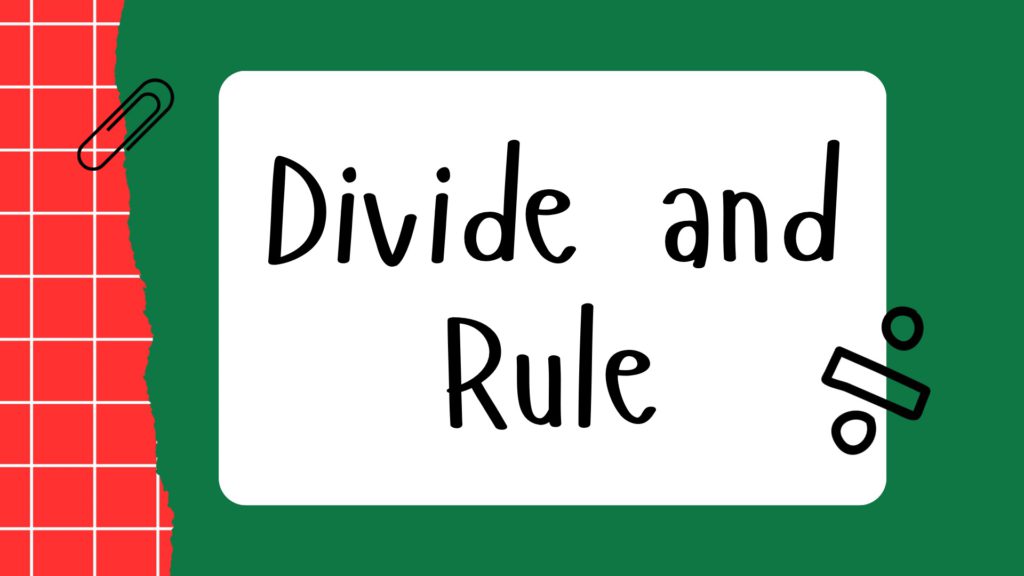
Divide and Rule: A Timeless Strategy with Modern Implications (Part 1-Divide and Rule Tactics)

The “Divide and Rule” strategy has been a longstanding tool in the arsenal of political power, used historically to maintain control over diverse regions and groups. By fostering discord among targeted populations, dominant powers have often manipulated internal divisions to their advantage, ensuring less unified opposition and easier governance—or domination.
Historical Roots: The Moro Conflict
In the Philippines, the Moro conflict exemplifies this tactic’s enduring relevance. During the 20th century, colonial and later national governments employed divide and rule strategies to manage the Moro peoples in Mindanao. One prominent example is the emergence of the Moro National Liberation Front (MNLF) in the 1960s, led by Professor Nur Misuari. The MNLF initially sought autonomy but later fragmented into various factions, partly due to external influences and internal disagreements, weakening the Moro movement’s unified front.
This fragmentation was exploited by various actors, complicating peace efforts and prolonging conflict. The policies and maneuvers that fostered divisions within Moro groups illustrate how divide and rule can be a double-edged sword—undermining unity but also providing opportunities for strategic manipulations.
Lessons Learned and Present-Day Implications :
The ongoing peace process with the Moro Islamic Liberation Front (MILF)—a successor in many respects to the MNLF—serves as a modern case study. Recent developments show that maintaining unity among Moro groups remains challenging. External actors and internal disagreements can threaten peace agreements, reminiscent of past divisions.
One key lesson is that divisive strategies may provide short-term gains for those seeking to control or influence volatile regions but tend to sow long-term instability. Genuine peace-building efforts should focus on fostering unity, inclusivity, and addressing the root causes of conflict rather than exploiting existing fissures.
Conclusion :
The “Divide and Rule” strategy endures as a potent, though dangerous, approach to control. The Moro conflict’s history demonstrates both the destructive potential of division and the importance of unity for lasting peace. Recognizing the tactics of division can help policymakers and stakeholders create more effective, inclusive solutions to complex conflicts—lessons that remain ever relevant today. (Note: This article is shared by BMN/BangsamoroToday with the author’s permission, Abdullah P. Salik, Jr.)

